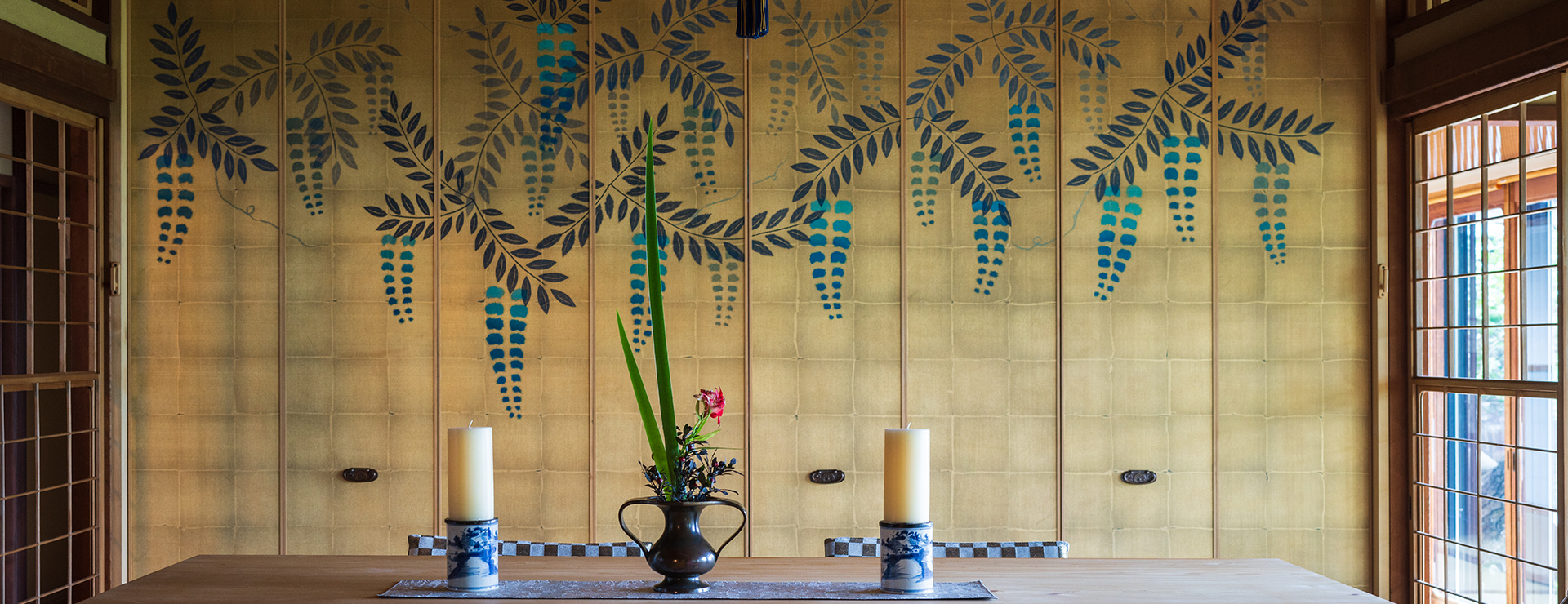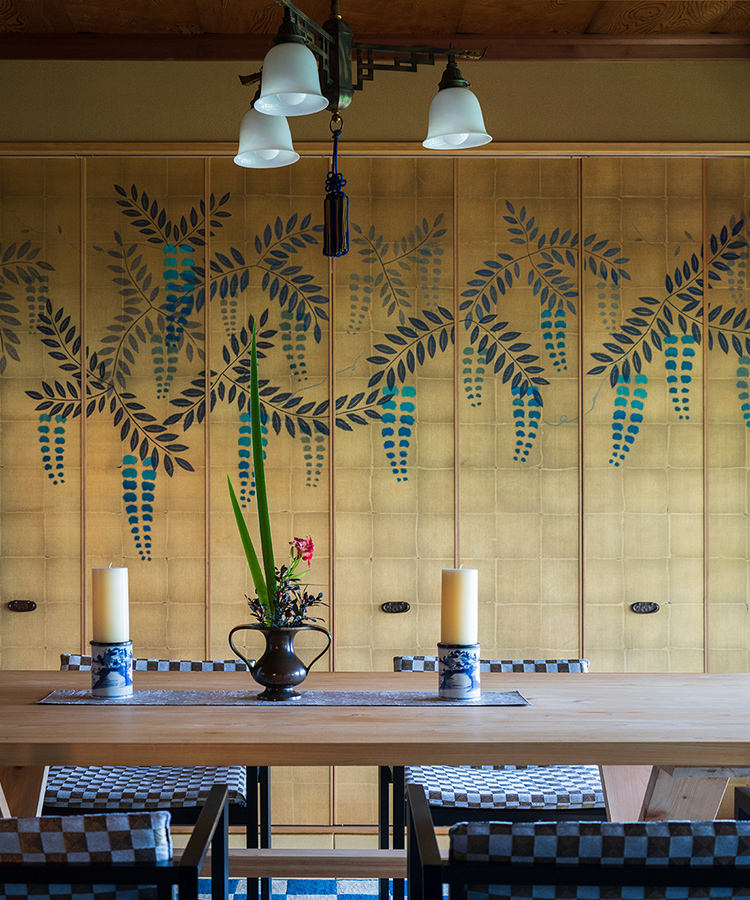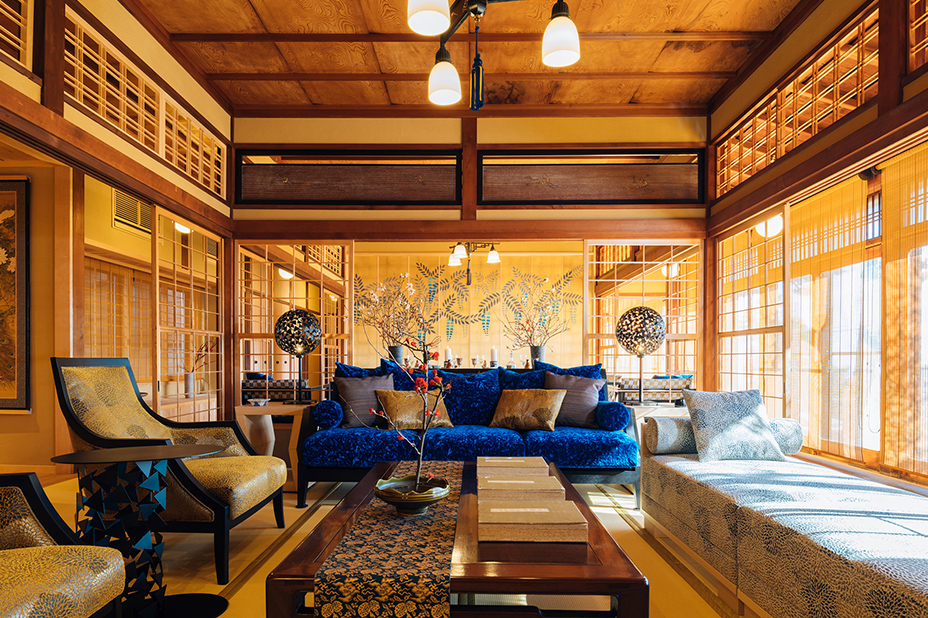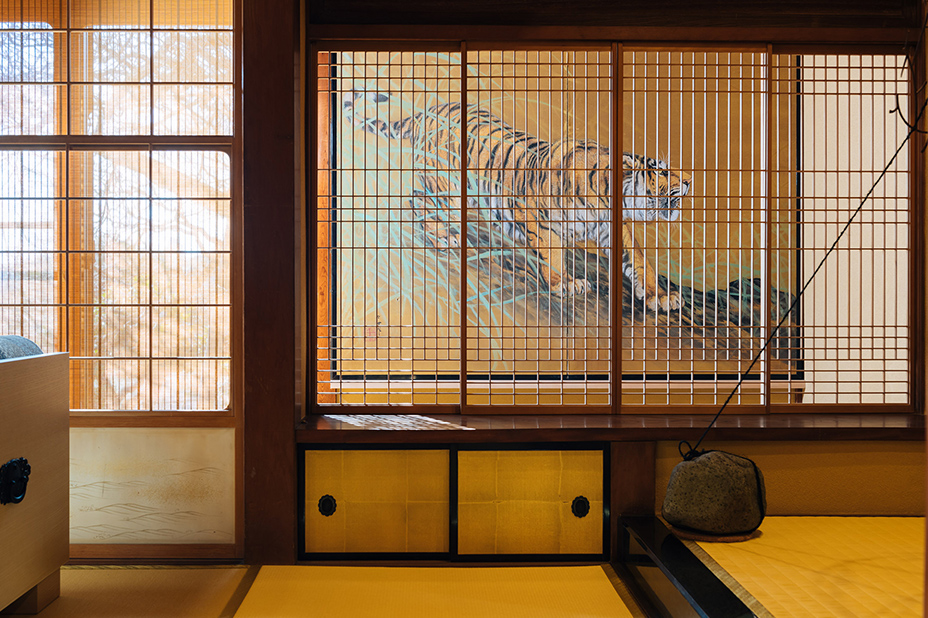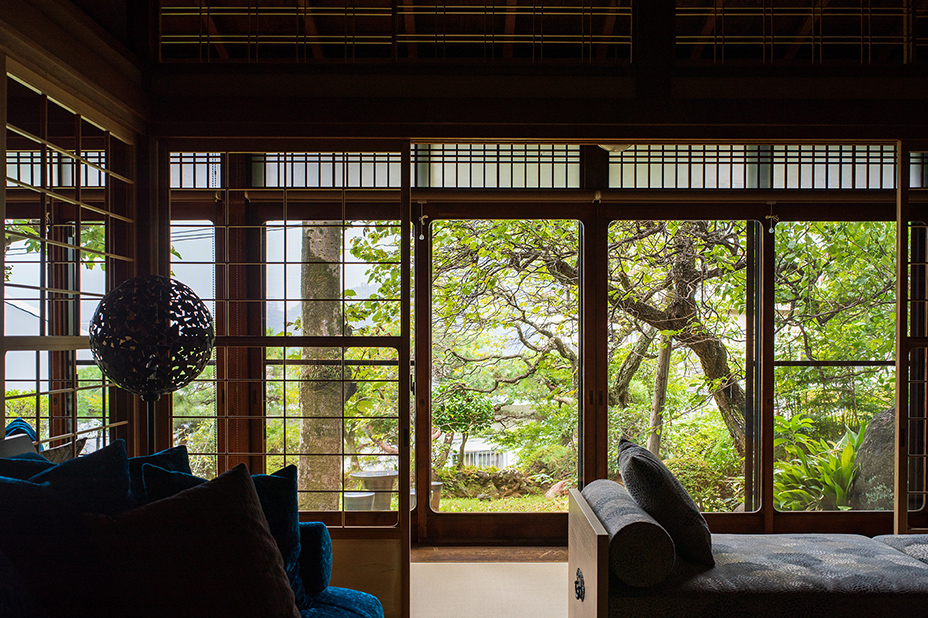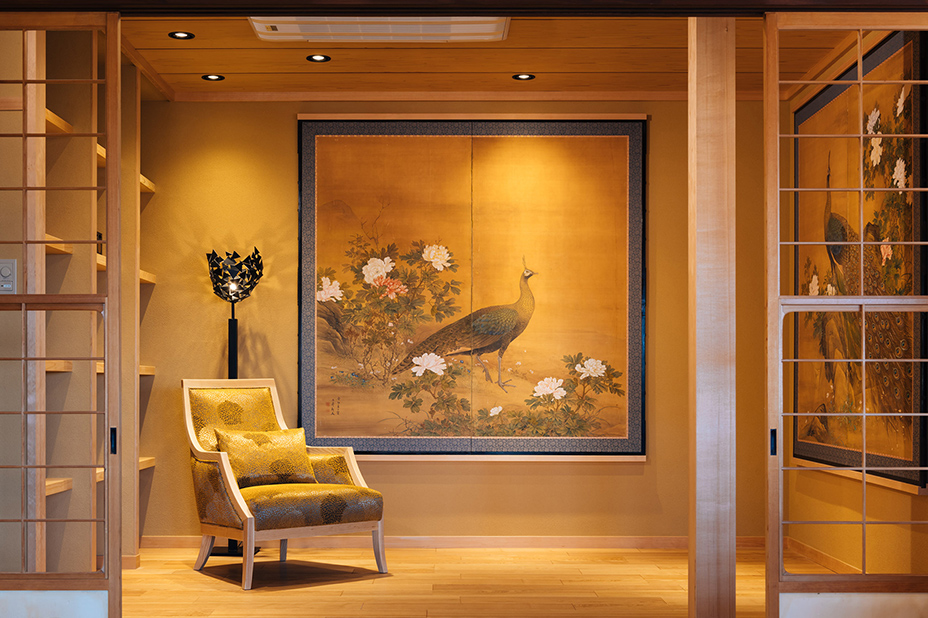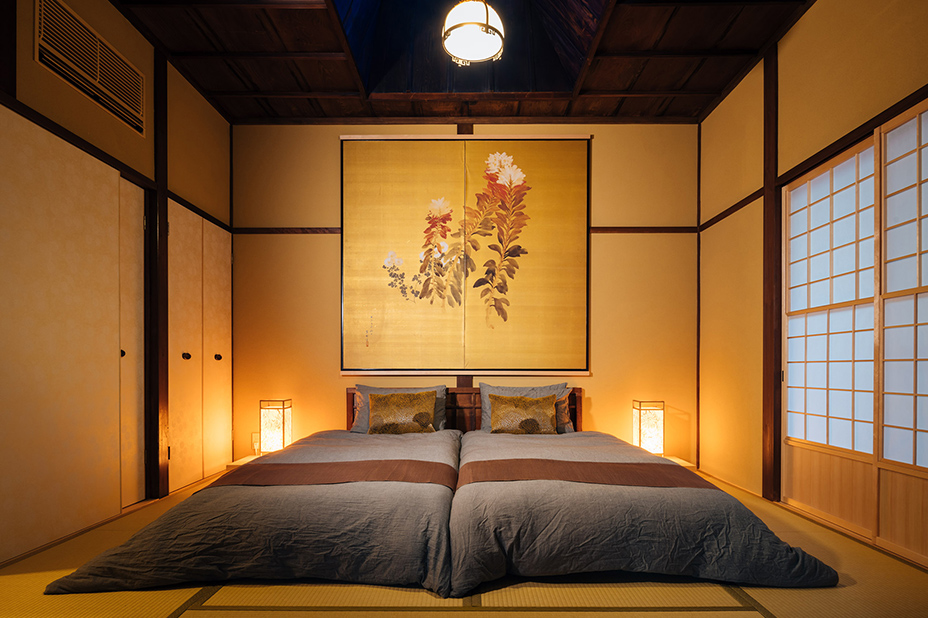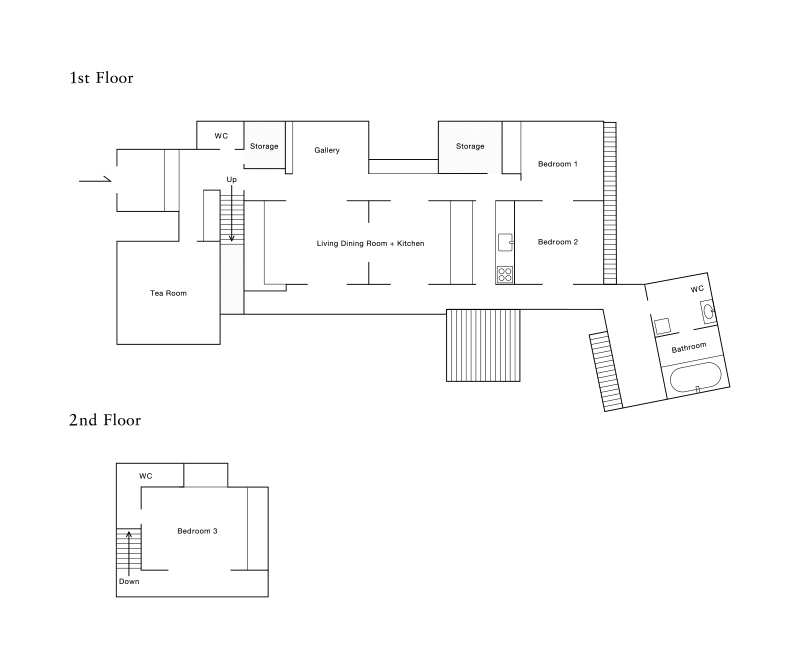Sutosuien
Suto-suien須藤水園
Experience contrasting beauty in this 100-years’ old designated national cultural property.
Originally an Irimoya (half-hipped) structure, built in 1920, it has been reinvented as a private boutique hotel. In 2021, it was designated as an important national cultural property by the Agency for Cultural Affairs (bunka-cho).The traditional Japanese design features, such as the single-boarded Yakushima cedar ceiling and the jigoku-gumi shoji screens, have been carefully preserved and integrated with modern ambiance which resulted in receiving high evaluation by an international design awards. Themed with Wabi-Sabi aesthetics that cherish natural textures and glorious Miyabi elegance, Curation Hotels has created a dramatic, expressive boutique hotel. Surrounded by golden folding screens and Koimari (Edo-period Imari wares), you can enjoy a luxurious and indulgent stay, in an archetypical Atami vacation house, in an area known for vacation homes.
History
Suto-suien’s owner, an acknowledged patron of traditional crafts and arts, has renovated this family vacation house that has been passed from generation to generation. The precious collections of arts and crafts which the owner had accumulated in this house are displayed throughout.
Architecture
Approached through its Japanese garden with a pine tree, leading to its stately entrance with calligraphy above the door, Suto-suien is of Irimoya architecture built partially on two stories. It features 120 shoji sliding doors that were rejuvenated by traditional washing techniques. In addition to the 85 m2 open plan living dining space, there are two relaxing, adjoined bedrooms, a Japanese style bedroom with a balcony and a wooden deck, facing the garden, from where you can feel the refreshing sea breezes.
Interior
Blue is brought into and permeates the interior, evoking the sky and the ocean off Atami. The blue Ichimatsu checkered-pattern rug, passed down through generations, and the Sugiura Touki Pottery’s blue Tajimi tiles that cover the kitchen walls emphasize the gaiety of the Kano school’s folding screens.
Art
The Kano-school’s two-panel folding screens depicting male and female peacocks along with another of a vibrant, dynamic tiger, are boldly showcased inside the hallways. In the dining room is a large, golden, folding-screen joinery. Made using traditional technique of Chigirie Japanese paper collage, it represents the wisteria flowers described on Ninsei Nonomura’s pottery, Iroefujihanamonchatsubo, which is a National treasure exhibited in MOA in Atami.
Useful information
| Bedrooms | 2 bedrooms (maximum 4 guests) |
|---|---|
| Bed types | 4 Futon |
| Rooms | 3 bedrooms/ LDK (Living Dining Kitchen)/ 1 western room (private viewing only)/ 1 bathroom/ 2 toilets / a wood-deck terrace and garden |
| Area | 220㎡ |
| Facilities | portable TV/ Wi-Fi/ kettle/ refrigerator/ soda stream machine/ microwave oven/ toaster/ IH stove/ washing and drying machine/ air purifier with humidification/ dish washer/ hair dryer/ iron |
| Amenities | bath towel/ face towel/ tea shampoo/ tea conditioner/ tea body soap/ seven herbs makeup remover/ seven herbs all in one gel/ Hiba (hinoki leaf) original sanitizer/ tooth brush/ cotton swabs |
| Rentable equipment | projector/ Bluetooth speaker |
*cooking utensils and table wear are also available.
*Please contact us if you have other requirements not listed above.
